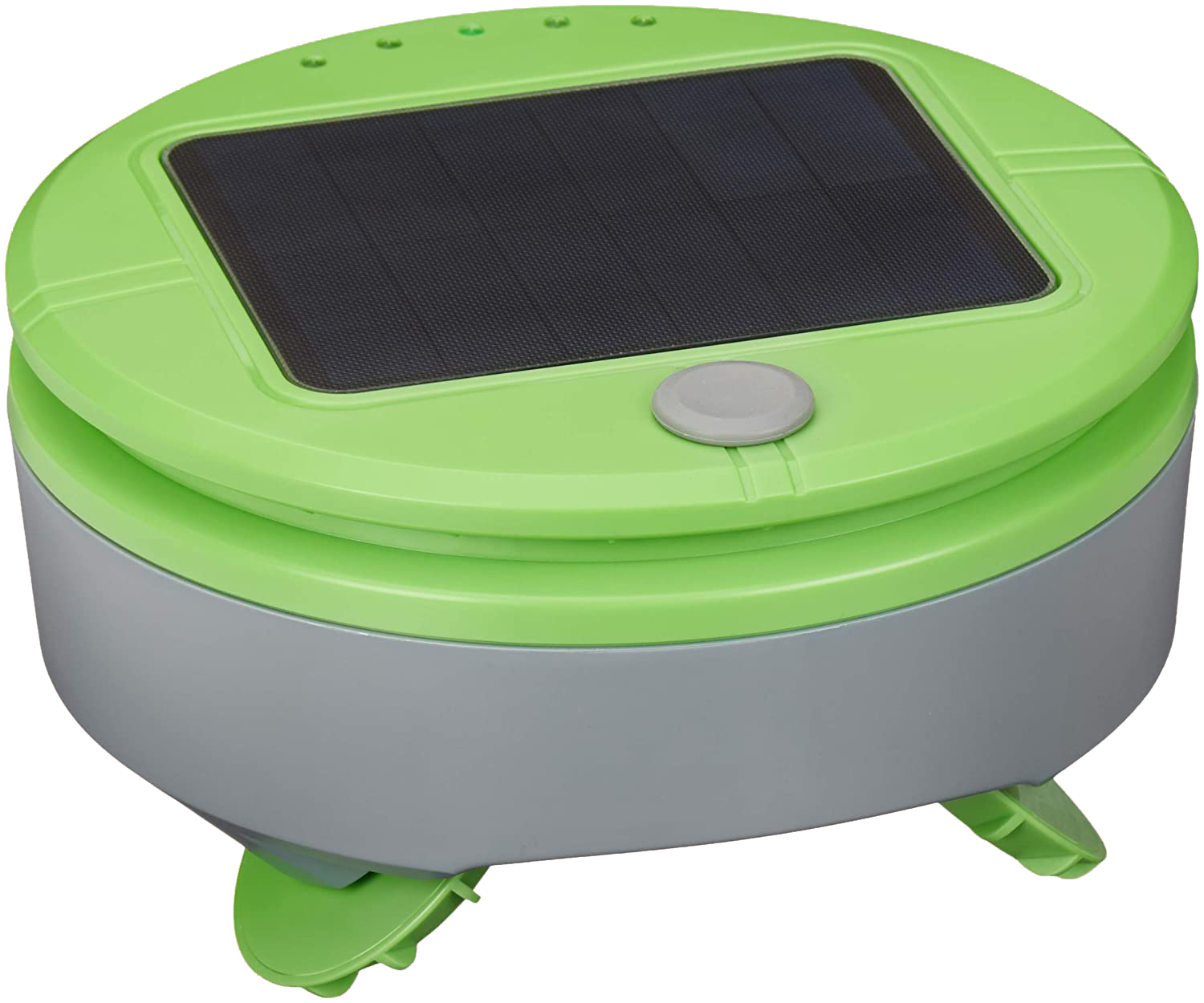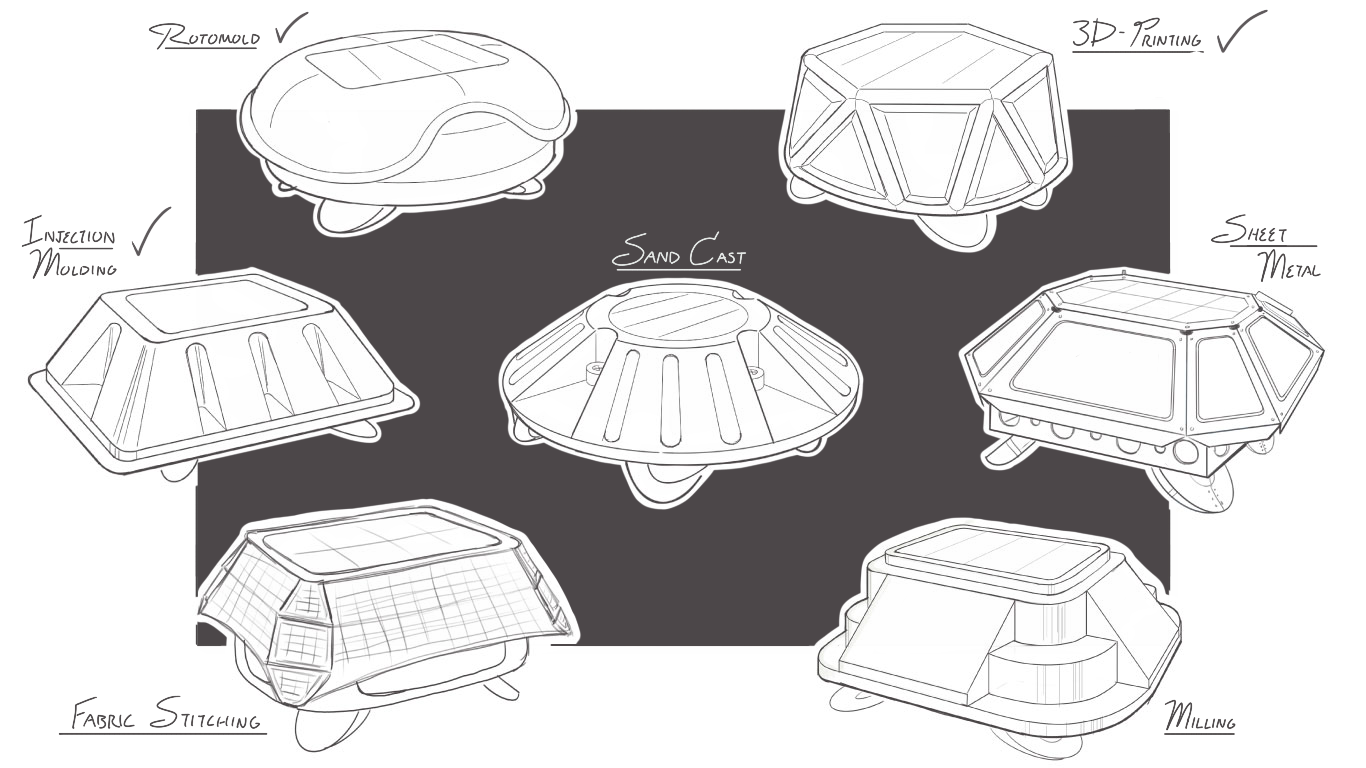WEEDING ROBOT
OVERVIEW An autonomous, solar-powered garden robot that could periodically remove any growing weeds in a garden bed.
OBJECTIVE This case study was all about redesigning an existing robot while incorporating new features and exploring manufacturing process. I chose to reference robots in early production that are dedicated to helping out in home gardens.
REFERENCE I chose to base my redesign after a series of prototype and early production robots that specialize in garden maintenance
Version to be reworked
APPROACH In my updated design, I wanted to keep major features of the original model while fitting the redesign with added components to enhance the autonomy and capabilities.
CONCEPTS Early ideation began by exploring concepts that could be produced with today’s manufacturing standards and technology. My first round of sketches revolved around developing rough ideas based on different manufacturing methods. By doing this, I selected the concepts whose processes complimented its aesthetics and plausibility.
From there, I went on to sketch a second round of concepts where I fleshed out various design forms while still keeping the three selected processes in mind. This helped in “weeding” out any flaws that would prevent an idea from being impossible to manufacture later on in the project development.
Chosen Design Direction
SOLUTIONS After finalizing my redesign, my next step was to break up the device into separate components and apply the most applicable manufacturing process and materials. Because of the steps I took in the beginning of having specific manufacturing methods in mind when conceptualizing, this stage of development was seamless.
Bill of Materials:
Component Callouts:













